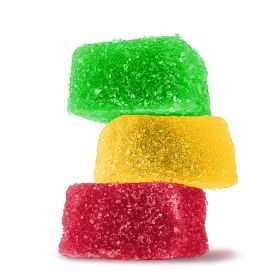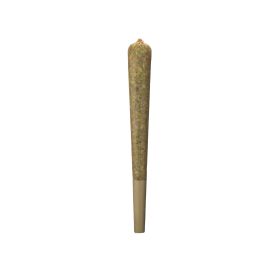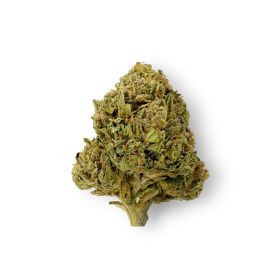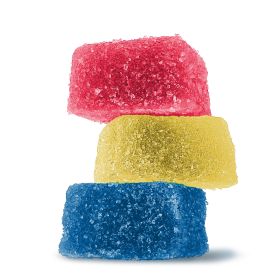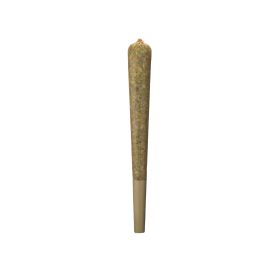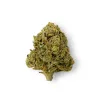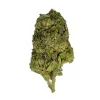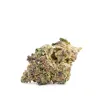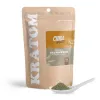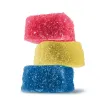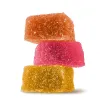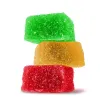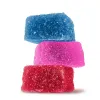If were wondering how to make cannabutter and you want to try your hand in the kitchen and reap a reward much larger—and much woozier— than just a warm meal, this cannabutter recipe exactly what you need.
What Is Cannabutter?
“Cannabutter”, or cannabis butter, is the main and most essential ingredient when making cannabis-infused edibles. The cannabutter-making process is pretty straightforward; simply decarb your weed, grind it, and simmer that bud in melted butter. This seems easy enough, but we’ll dive deeper into the exact details later.
While the infamous weed brownie may have been cannabutter’s claim to fame, baked goods don’t make up the entire spectrum of cannabutter’s uses. As a matter of fact, you can use cannabutter as a substitute anywhere you’d use butter or fat in a traditional recipe, making your cannabis cuisine possibilities virtually endless.
If you want to learn how to make cannabutter, simply gather your materials and follow this easy and effective cannabutter recipe!
A Brief History of Cannabis Cooking
Old School Cookin'
Humans have been cooking with cannabis since around the 10th century BC. Originating in India, bhang was, in some ways, the first incarnation of what we know as cannabutter today. Though its preparation has evolved throughout the years, its end goal remains the same: to infuse the properties of cannabis into food (and give those who consume it a bhang-ing high).
At around the same time in Europe, cannabis was also becoming popularized in cooking. Fifteenth-century Italian scholar Bartolomeo Platina produced On Honorable Pleasure and Health, a cookbook that featured a ganja recipe supposed to result in a “health drink of cannabis nectar”.
Many people think that cannabis must be cooked in oil or butter, but this myth was debunked by none other than the legendary Alice B. Toklas: a San Francisco native, Paris party scene fixture, and girlfriend to author Gertrude Stein.
The Cannabutter Revival
Toklas likely treated the her friends, which included Ernest Hemingway, Pablo Picasso, and Henri Matisse, to her popular “hash brownies”. Famous for her baking, Alice released an autobiographical cookbook that included the recipe for this “Haschich Fudge”, which apparently contained no hash or chocolate at all, and wasn’t even invented by Toklas herself, but shared with her by a friend.
The hippies drew immense inspiration from Toklas’ recipe, which was immortalized in the film, I Love You Alice B. Toklas. The movie, however, features actual chocolate brownies, which explains how these baked goods became forever associated with getting baked good (and forever erroneously associated with Alice Toklas). So, next time you eat a pot brownie, be sure to thank your local lesbian community!
Cannabis enthusiasts have been experimenting with how to make cannabutter for decades—and it’s easy enough to follow in their footsteps with a little bit of patience (and a lot of weed).
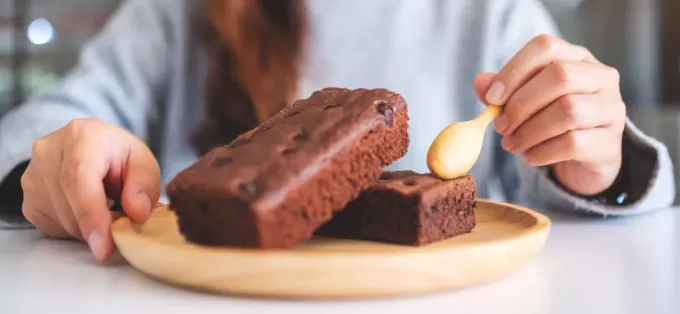
How Is Eating Cannabutter Different From Smoking Cannabis?
While both of these methods are fun and efficient in their own ways, smoking weed and eating cannabutter share more differences than similarities. On one hand, smoking gets you high quickly and peaks within the hour, while edibles take a few hours to kick in but create a much longer-lasting high.
Smoking marijuana gets the THC and cannabinoids in your blood fairly quickly, so you’ll likely feel the effects within minutes of hitting a fat doobie. Eating cannabutter, however, creates a much longer path between the cannabis and your bloodstream, which means it may take a couple hours for the effects to kick in as the THC makes its way through your digestive system.
All this waiting won’t have been for nothing, though; as a matter of fact, a main benefit of cannabutter is that its high lasts around five times as long as smoking weed!
Another benefit of cannabutter is that it’s much healthier for your body. Smoking cannabis has been known to cause some lung irritation, especially if you’re a big toker. Eating cannabutter means no risk to your lung health, since your stomach absorbs the cannabinoids instead.
The Basics of Cannabutter
The first and most important step to making cannabutter is to decarboxylate (decarb) the cannabis flower. While Alice B. Toklas and the 10th century Indians may have disregarded this step back then, we now know that skipping this crucial step will result in butter that has very mild psychotropic effects.
The process of decarboxylation consists of using heat to turn tetrahydrocannabinolic acid (THCA) into tetrahydrocannabinol (THC) in order to activate the plant’s psychoactive potency. Even when you light a J or smoke a bowl, the heat from your lighter decarbs the plant material in order to get you stoned, so this isn’t just a baking necessity, it’s a baking necessity.
As with other types of cooking, the quality of your cannabutter ingredients will certainly dictate the quality of your cannabutter. Use high quality cannabis to create potent cannabutter; use good quality butter to get a better end result, and don’t use any of that non-fat crap. Cannabis is a fat-soluble substance, so if you want to get high off the bat, remember to stick with the fat!
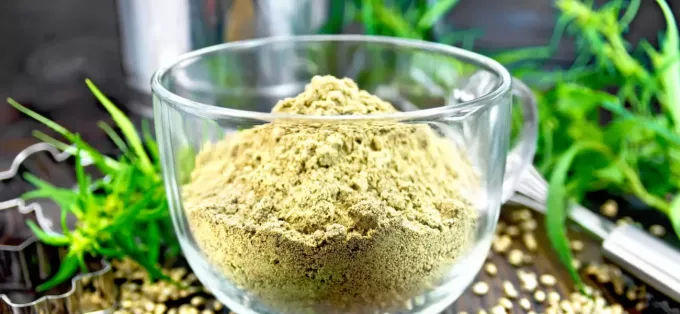
The Best Cannabutter Recipe
Now that we’ve been over the cannabutter basics, let’s step into the kitchen and dive into how to make cannabutter.
What You’ll Need:
|
Materials |
Ingredients |
|---|---|
|
|
Step 1: Decarb Time!
As previously discussed, decarboxylation is an absolutely essential step in any cannabutter recipe. Here’s a quick and easy way to do just that:
- Grind or break your cannabis. You have two options to get through this first step: either put your herb through a grinder, or roughly break it apart with your fingers into smaller chunks. While the grinder is optional, we recommend grinding your cannabis flower for a simpler process.
- Heat your oven to 230°-245°F. Depending on your oven, its age, and how evenly it cooks, this number may vary. This estimate should be a good guide for your own oven, but it all depends on the state of your appliance.
- Pull out the baking tray. After laying down a piece of parchment paper to protect both the tray and the cannabis, carefully spread your (preferably ground) flower onto the sheet.
- Bake for 30 minutes. Gently stir it every five minutes to ensure an even decarb process.
- Stay vigilant. Too much heat may break down the essential cannabinoids and terpenes in cannabis that work to enhance your high. Your goal here is to activate these beneficial compounds, not burn them to a crisp!
Step 2: Combine Your Cannabis and Butter
If you chose to break down the cannabis roughly instead of grinding it in the first step, now’s the time to grind that weed. At this point, the dry flower will be a lot easier to grind using just your hands than before, but a grinder is always the quickest and easiest option.
A Word of Advice: Anything small enough to fit through a strainer or cloth will end up in your butter, so be sure not to grind the weed into a fine powder. Sprinkle your kief in a bowl or joint instead!
- Melt 1 cup of butter and 1 cup of water. In the same pot, melt these two ingredients. The water will help the butter heat more evenly, and don’t worry, any water that doesn’t evaporate will be removed at the end.
- Set your burner to the lowest heat level. The butter should be cooked at around 150°F, and should not exceed 200°F.
- Add your decarbed cannabis. Stir the mixture until it’s well integrated and cover the pot with a lid. This will help evenly distribute the heat to ensure a slow and steady extraction.
- Let simmer. Usually, letting the butter simmer at a low temperature for at least three hours creates a potent end result, but you can wait longer if you’d like. If you do choose to let it simmer for more than four hours, consider adding more water as it evaporates to avoid overheating the butter. Stir occasionally.
Step 3: Strain that Baby!
After around three hours (when your whole house smells faintly of good kush), it’s time to strain your cannabutter mixture. Simply place a strainer or cheesecloth over your container of preference (we like glass jars) and pour the mixture over it. Give it time to adequately drain. Discard the flower left over.
Quick Tip: Don’t try to squeeze every last drop of butter out of the plant material, this will release chlorophyll in your cannabutter and leave it with a bitter, unpleasant taste.
Step 4: Cool and Enjoy!
Congratulations! You’ve successfully learned how to make cannabutter. After it’s strained, place your cannabutter container in the fridge and let it harden for a few hours, but preferably overnight. Once it’s solidified, you’ll be able to see a thick layer of butter at the top and the leftover water at the bottom. Carefully hold the butter in place with a clean utensil and pour the leftover water out of the jar.
Store your cannabutter in the fridge in an air-tight container and it should last up to 4 weeks. Freezing cannabutter is a good way to extend its shelf-life without degrading the THC.
Warning: Always smell old cannabutter before using. If it smells rotten, don’t eat it.
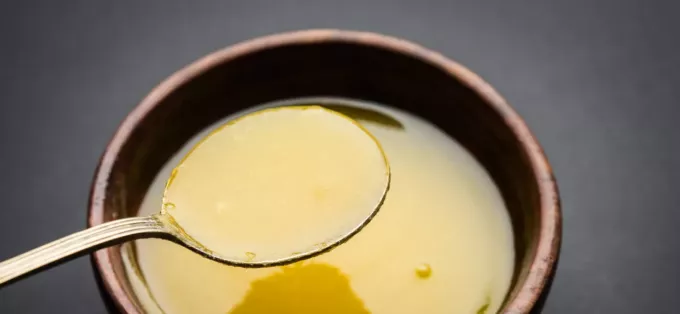
Dosing Cannabutter: Getting Baked to Perfection
You followed our cannabutter recipe and now have a container filled with a deliciously potent addition to any meal you make, but now what? How do you know how much cannabutter to use in your recipes?
Dosing cannabutter, especially when it’s homemade, can be a tricky endeavor. As with all things THC, it’s best to start low and slow and work your way up until you learn more about your tolerance levels. Remember, if the buzz is too mild for you, you can always eat another edible or add a little more cannabutter to your meal, but once you eat too much, there’s no going back. Cannabutter edibles can take a while to kick in, so make sure to wait an hour or two before going back for more!
You can combine cannabutter with regular butter to create a less potent product and estimate how much cannabutter is just enough for you. Keep in mind that edibles are a lot more potent—and a lot longer lasting—than other cannabis consumption methods, so pacing yourself is essential for a pleasant cannabutter experience.
The recommended estimates for edible dosages are divided into tiers of experience:
-
First-timers: 5-10 mg
-
Light users: 20-30 mg
-
Casual users: 50-70 mg
-
Regular users: 70-100+ mg
In our recipe, we call for two sticks of butter, totaling to 8oz. A cup of cannabis flower can total to anywhere from 7-10 grams, and assuming your weed contains around 15% THC (or 150 mg of THC per gram), we’ve got a quick little equation to guide you through dosing.
-
If you added 7g of weed, you can multiply 7 x 150mg = 1,050 mg.
-
If you added 10g of weed, you can multiply 10 x 150mg = 1,500 mg.
Now that you know the total amount of THC in your cannabutter, you should be able to estimate how many servings to get from your cannabutter batch. If you have around 1,500 mg of THC and are a casual user, for example, you could divide your batch into 30 50mg servings. You can edit this simple equation depending on your tolerance level, amount of weed, and THC percentage to get a foolproof cannabutter estimate every time!
What’s the Use?
Once you’ve made your buzzy butter, the sky’s the limit in the kitchen. You can prepare the baked goods of your dreams, that’ll be sure to get you baked and give you good dreams. You can use it to cook savory meals for your friends and family and get them where they want to be without leaving the house. You can even spread your cannabutter on some toast and start your days off on the right foot.
Cannabutter’s rise to fame was directed by pot brownies, but there’s no reason to stop there! Melt some butter in your pasta, or something. Spread it on your pancakes. Throw it in a pan and sear some steak. The point is, the possibilities are endless!
The hard part is learning how to make cannabutter and following the recipe. Now that you’re a certified cannabis chef, it’s time to let your creativity fly and swap out regular ol’ butter for cannabutter to give your food a kick unlike any other!
Cannabutter: Final Thoughts
Now that you know how to make cannabutter, how to dose it, and how to use it, all that’s left is to get to work and reap the rewards! All in all, cannabutter is a wonderful way to spice up your cooking and experiment with cannabis comfortably. You don’t need to be Martha Stewart to make deliciously intoxicating food for your friends and family; all you need is some weed and some patience! Our easy-to-follow cannabutter recipe is perfect for beginners, and equally as effective for seasoned cannabis cooks.

